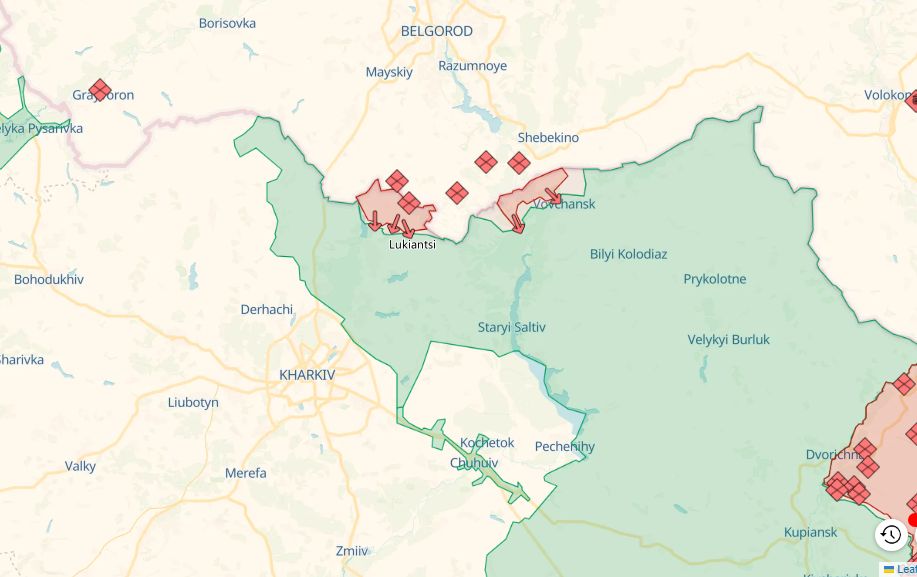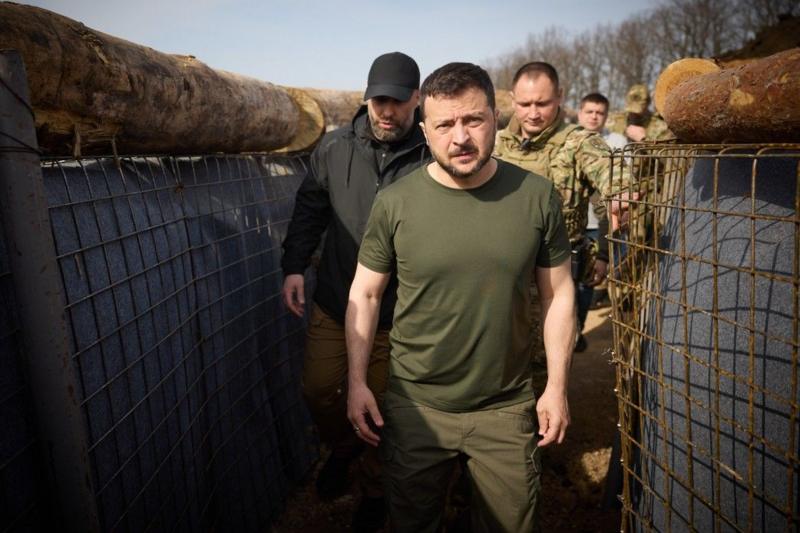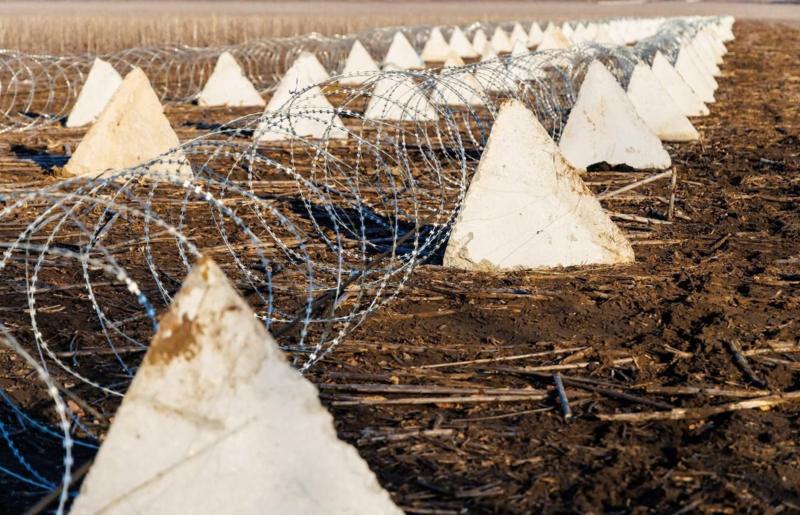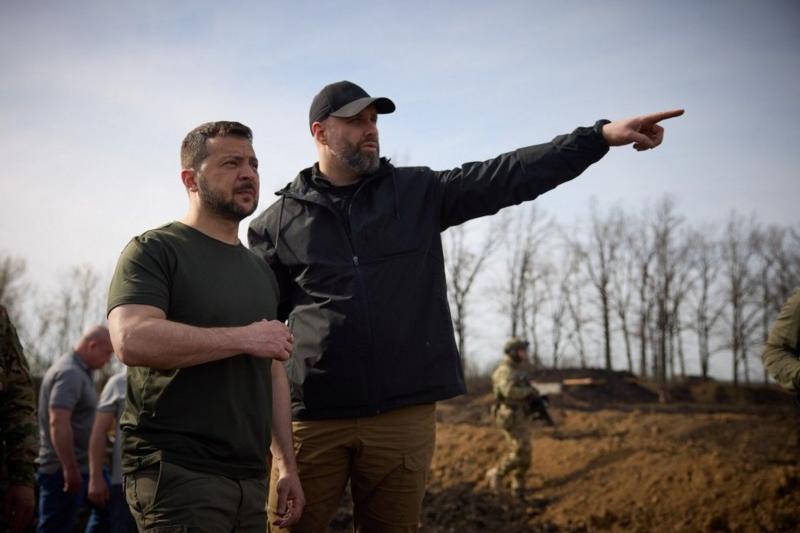Russia’s rapid breaching of the Ukrainian border in Kharkiv Oblast has raised three questions.
- How serious is the breakthrough?
- Was it preventable?
- What lessons does it offer for Ukraine’s defense?
We provide answers based on information from experts and officials.
1. How serious is Russia’s breakthrough in Kharkiv Oblast?
The assault, which started on 10 May, appears to be slowing down amid heavy losses. Russia has nevertheless occupied over 100 square kilometers of land, and nearly 8,000 residents had to be evacuated from dangerous zones.
Battles are still ongoing as Russia attempts to seize Vovchansk and Lukiantsi and, according to the US-based Institute for Study of War, create a “buffer zone” on the border, a task that Russian President Vladimir Putin and Russian leaders have spoken about repeatedly.

There is no threat of the seizure of Kharkiv city itself, experts and officials believe: the size of the Russian contingent is insufficient for this.
However, if Russia manages to come 15 kilometers closer from the border, it would place Kharkiv in the range of barrel artillery, exposing it to strikes that would reduce at least part of city, which has already suffered daily Russian missile strikes, to rubble.
Allegedly, this video shows the first minutes of the clash between Ukrainian border guards and an enemy group on the day the Kharkiv offensive began. Timely detection of the enemy saved the lives of the defenders. No one panicked despite realising that the enemy had a numerical… pic.twitter.com/uA5bf6M9SC
— WarTranslated (Dmitri) (@wartranslated) May 13, 2024
Another problem the breakthrough creates is that it thins out and distracts Ukrainian defenses.
“By opening up a new front in the north of the country, Russia creates dilemmas for Ukrainian commanders and forces them to divert key units that are currently holding the front line in the east of the country,”
writes military analyst Mykola Bielieskov.
2. Was Russia’s Kharkiv breakthrough preventable?
It certainly came as no surprise. Rumors of an offensive on Kharkiv had been circulating since Putin’s reelection. In response, Ukraine’s commander-in-chief Syrskyi warned in late March the Russians that any offensive on Ukraine’s second-largest city would prove fatal for them, citing Ukraine’s battle experience during the Kharkiv blitzkrieg that liberated vast swaths of land in 2022.
Questions about fortifications
He also said that fortifications and barriers were being constructed, and a plan to defend the city developed.
This made many observers question the quality of those fortifications, if they did not prevent such rapid advancement of the Russian troops.

Denys Yaroslavskyi, a reconnaissance commander fighting in this area, stated that the first line of defense near Vovchansk "simply did not exist,” which is why the Russians simply “walked in” the city. Censor.net editor-in-chief Yuriy Butusov, who was at the scene, confirmed this version.
"There are no signs of any defensive structures in and around the city," he said on 13 May. According to him, the defensive lines are located far from the border, but for some reason in the lowlands, not on the heights.
Butusov stated that while Ukraine did set up minefields, they were designed to be effective against tanks rather than infantry.
Amid the Russian offensive, Ukraine’s commander of the Kharkiv operational forces was replaced
- a move that some experts interpreted as proof of inadequate preparations.
Regional authorities push back against claims of insufficient defensive construction.
The head of the Vovchansk administration said that fortifications were constructed in the frontline regions of Kharkiv Oblast, but not as densely as desired due to constant shelling.
Meanwhile, Oleh Syniehubov, head of the Kharkiv Oblast Military Administration, told BBC that while civilian contractors attempted to build the second and third lines of defense, located 10-30 km away from the border with Russia, they came under fire.

Four civilian construction workers were killed, 15 injured, and 30 pieces of construction equipment were destroyed during these attempts.
Meanwhile, the military was responsible for building the first line of defense, in closest proximity to the border. There, they faced harsher Russian attacks than on the 2nd and 3d lines, which made constructing proper fortifications difficult.
The military also developed the fortification construction plan for the civilian engineers, who built it under the supervision of military engineers, Syniehubov said.
However, the work of the military administration has come under fire by the Mezha anti-corruption center, whose head Martyna Bohuslavets claims that contracts were concluded with shady firms “with signs of fictitiousness,” leading to swindling of state funds.
Responding to the allegation, the Kharkiv Oblast head told BBC that the administration constantly checked whether the works were carried out correctly and rescinded agreements if the contractors were unable to build the fortifications as planned and reacted to law enforcement warnings of “abuse.”

He also announced that the contractors for building fortifications would be required to report on their work to the administration.
Inability to react to threat despite having intel
OSINT analyst Tatarigami wrote, after analyzing satellite images, that the zones currently under Russian control and adjacent areas aka the “first line of defense,” actually appear to have fortifications, with the area near Vovchansk being sufficiently less fortified than the one near Lukiantsi.
https://twitter.com/Tatarigami_UA/status/1790086938046710097/
Nevertheless, The different fortification levels resulted in the same outcome: many positions were abandoned, and Russians advanced.
Given that the attack was not unexpected, Tatarigami concludes that
“the abandonment of positions and advancement beyond the gray zone indicates brigade leadership's and the strategic command's inability to react to threats despite having intel.This is the result of systematic issues stemming from a lack of understanding of brigade capabilities and readiness, along with problems in personnel training, leading to an inability to effectively position and allocate resources when needed.”
Ukrainian combat veteran Constantine concurs – he believes that the poor response comes from the culture of Ukraine’s highest leadership in which units/commanders reporting problems are frowned upon, leading to hushed-up issues that grow.
“The key problem was still the command that failed to prepare for a well-known Russian offensive.
The units were simply not prepared to fight. It's not only a fortifications issue; it's a lack of cohesiveness, poor communication, bad positioning, and poor training of the stationed units.”
So does military journalist Yuriy Butusov. In an interview with Radio NV, he states that all Ukrainian problematic sectors of the front experience the same troubles as the Kharkiv Oblast units.
He believes that the amount of field fortifications was clearly insufficient. Moreover, the organization of drone reconnaissance and overall work with drones was weak in this sector. So was management and organization, which failed to develop a plan to the possible Russian invasion.
The gaps in management are exacerbated by the army’s seniors lacking responsibility for bad decisions: it is the “main problem of our time,” he says.
Delays in Western aid and a prohibition to strike objects inside Russia
Mykola Bielieskov names two other factors leading to this Russian advantage: delays in western weapons supplies, which have given Russia the upper hand in ammunition and manpower, and a western prohibition on using western weapons to strike objects on Russian territory.
These restrictions, which “contradict all military logic,” have allowed Russia to concentrate troops close to the Ukrainian border without fear of retaliation.
“Unless Ukraine is granted the right to hit military targets inside Russia, it will be extremely difficult to defeat the current offensive or prevent more cross-border attacks similar the recently opened front in the Kharkiv Oblast,” Bielieskov believes.
3. What lessons does Russia’s breakthrough in Kharkiv Oblast offer for Ukraine’s defense?
Orest Zog, writing in Texty, makes some pertinent observations about what Ukraine could have done better and what conclusions it needs to make.
- While Russians use engineering companies to build fortifications a mere eight kilometers from the frontline, Ukrainian military engineers have fewer construction equipment and are reluctant about risking using this scarce equipment that close. The disparity in availability of equipment leads to a situation where Russians have more fortifications than Ukrainians.
- The quick pace of the Russian advance means that there were not enough mines. Potentially, Ukraine could have used means of remote mining such as via the М270/MARS rocket systems, which were used in eastern Ukraine.
- Videos released by the Russians reveal their high saturation of reconnaissance drones, which allowed quickly spotting and striking Ukrainian armored vehicles. This situation is nothing new: “Russian deep reconnaissance UAVs are becoming a growing problem for Ukrainian defense,” Zog believes, calling for extraordinary measures to find ways to shoot them down.
- The newly-recruited soldiers to the Ukrainian army are less motivated and prepared than the volunteers who initially reacted to Russia’s invasion. This leads to some units abandoning their positions, leading to collapses in the front. But there may not be other people: this means that the Army must prepare to give them more rigorous training, and create response plans for every possible situation.
Military journalist Butusov draws yet another lesson: Ukrainian army commanders drastically need “lessons learned” analysis, in line with NATO standards. It is “designed to help leaders (not soldiers, but leaders) learn how to manage people and draw conclusions. Meanwhile, by us, nothing changes."
Related:

